
Nonlinear optics (NLO) is the branch of optics that describes the behaviour of light in nonlinear media, that is, media in which the polarization density P responds non-linearly to the electric field E of the light. The non-linearity is typically observed only at very high light intensities (when the electric field of the light is >108 V/m and thus comparable to the atomic electric field of ~1011 V/m) such as those provided by lasers. Above the Schwinger limit, the vacuum itself is expected to become nonlinear. In nonlinear optics, the superposition principle no longer holds.
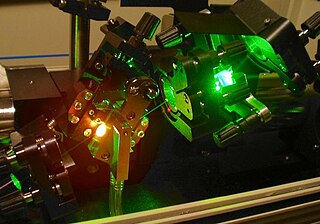
Ti:sapphire lasers (also known as Ti:Al2O3 lasers, titanium-sapphire lasers, or Ti:sapphs) are tunable lasers which emit red and near-infrared light in the range from 650 to 1100 nanometers. These lasers are mainly used in scientific research because of their tunability and their ability to generate ultrashort pulses. Lasers based on Ti:sapphire were first constructed and invented in June 1982 by Peter Moulton at the MIT Lincoln Laboratory.

In physics, a squeezed coherent state is a quantum state that is usually described by two non-commuting observables having continuous spectra of eigenvalues. Examples are position and momentum of a particle, and the (dimension-less) electric field in the amplitude and in the mode of a light wave. The product of the standard deviations of two such operators obeys the uncertainty principle:

Spontaneous parametric down-conversion is a nonlinear instant optical process that converts one photon of higher energy, into a pair of photons of lower energy, in accordance with the law of conservation of energy and law of conservation of momentum. It is an important process in quantum optics, for the generation of entangled photon pairs, and of single photons.
Four-wave mixing (FWM) is an intermodulation phenomenon in nonlinear optics, whereby interactions between two or three wavelengths produce two or one new wavelengths. It is similar to the third-order intercept point in electrical systems. Four-wave mixing can be compared to the intermodulation distortion in standard electrical systems. It is a parametric nonlinear process, in that the energy of the incoming photons is conserved. FWM is a phase-sensitive process, in that the efficiency of the process is strongly affected by phase matching conditions.

An optical microcavity or microresonator is a structure formed by reflecting faces on the two sides of a spacer layer or optical medium, or by wrapping a waveguide in a circular fashion to form a ring. The former type is a standing wave cavity, and the latter is a traveling wave cavity. The name microcavity stems from the fact that it is often only a few micrometers thick, the spacer layer sometimes even in the nanometer range. As with common lasers, this forms an optical cavity or optical resonator, allowing a standing wave to form inside the spacer layer or a traveling wave that goes around in the ring.

Potassium titanyl phosphate (KTP) is an inorganic compound with the formula KTiOPO4. It is a white solid. KTP is an important nonlinear optical material that is commonly used for frequency-doubling diode-pumped solid-state lasers such as Nd:YAG and other neodymium-doped lasers.

An optical parametric oscillator (OPO) is a parametric oscillator that oscillates at optical frequencies. It converts an input laser wave with frequency into two output waves of lower frequency by means of second-order nonlinear optical interaction. The sum of the output waves' frequencies is equal to the input wave frequency: . For historical reasons, the two output waves are called "signal" and "idler", where the output wave with higher frequency is the "signal". A special case is the degenerate OPO, when the output frequency is one-half the pump frequency, , which can result in half-harmonic generation when signal and idler have the same polarization.
Ultrafast laser spectroscopy is a spectroscopic technique that uses ultrashort pulse lasers for the study of dynamics on extremely short time scales. Different methods are used to examine the dynamics of charge carriers, atoms, and molecules. Many different procedures have been developed spanning different time scales and photon energy ranges; some common methods are listed below.
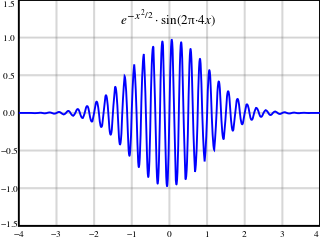
In optics, a frequency comb is a laser source whose spectrum consists of a series of discrete, equally spaced frequency lines. Frequency combs can be generated by a number of mechanisms, including periodic modulation of a continuous-wave laser, four-wave mixing in nonlinear media, or stabilization of the pulse train generated by a mode-locked laser. Much work has been devoted to this last mechanism, which was developed around the turn of the 21st century and ultimately led to one half of the Nobel Prize in Physics being shared by John L. Hall and Theodor W. Hänsch in 2005.

Second-harmonic generation is a nonlinear optical process in which two photons with the same frequency interact with a nonlinear material, are "combined", and generate a new photon with twice the energy of the initial photons, that conserves the coherence of the excitation. It is a special case of sum-frequency generation (2 photons), and more generally of harmonic generation.

Harmonic generation is a nonlinear optical process in which photons with the same frequency interact with a nonlinear material, are "combined", and generate a new photon with times the energy of the initial photons.
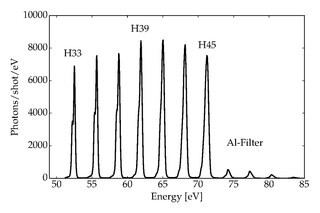
High-harmonic generation (HHG) is a non-linear process during which a target is illuminated by an intense laser pulse. Under such conditions, the sample will emit the high harmonics of the generation beam. Due to the coherent nature of the process, high-harmonics generation is a prerequisite of attosecond physics.
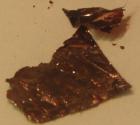
Gallium(II) selenide (GaSe) is a chemical compound. It has a hexagonal layer structure, similar to that of GaS. It is a photoconductor, a second harmonic generation crystal in nonlinear optics, and has been used as a far-infrared conversion material at 14–31 THz and above.
Michal Lipson is an American physicist known for her work on silicon photonics. A member of the National Academy of Sciences since 2019, Lipson was named a 2010 MacArthur Fellow for contributions to silicon photonics especially towards enabling GHz silicon active devices. Until 2014, she was the Given Foundation Professor of Engineering at Cornell University in the school of electrical and computer engineering and a member of the Kavli Institute for Nanoscience at Cornell. She is now the Eugene Higgins Professor of Electrical Engineering at Columbia University. In 2009 she co-founded the company PicoLuz, which develops and commercializes silicon nanophotonics technologies. In 2019, she co-founded Voyant Photonics, which develops next generation lidar technology based on silicon photonics. In 2020 Lipson was elected the 2021 vice president of Optica, and serves as the Optica president in 2023.
The Mamyshev 2R regenerator is an all-optical regenerator used in optical communications. In 1998, Pavel V. Mamyshev of Bell Labs proposed and patented the use of the self-phase modulation (SPM) for single channel optical pulse reshaping and re-amplification. More recent applications target the field of ultrashort high peak-power pulse generation.
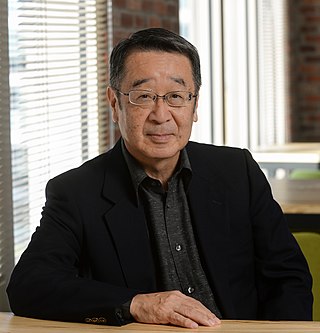
Yoshihisa Yamamoto is the director of Physics & Informatics Laboratories, NTT Research, Inc. He is also Professor (Emeritus) at Stanford University and National Institute of Informatics (Tokyo).
Kerr frequency combs are optical frequency combs which are generated from a continuous wave pump laser by the Kerr nonlinearity. This coherent conversion of the pump laser to a frequency comb takes place inside an optical resonator which is typically of micrometer to millimeter in size and is therefore termed a microresonator. The coherent generation of the frequency comb from a continuous wave laser with the optical nonlinearity as a gain sets Kerr frequency combs apart from today’s most common optical frequency combs. These frequency combs are generated by mode-locked lasers where the dominating gain stems from a conventional laser gain medium, which is pumped incoherently. Because Kerr frequency combs only rely on the nonlinear properties of the medium inside the microresonator and do not require a broadband laser gain medium, broad Kerr frequency combs can in principle be generated around any pump frequency.
Andrew Marc Weiner OSA NAE NAI is an American electrical engineer, educator and researcher known for contributions to the fields of ultrafast optics and optical signal processing. He is the Scifres Family Distinguished Professor of Electrical and Computer Engineering at Purdue University.
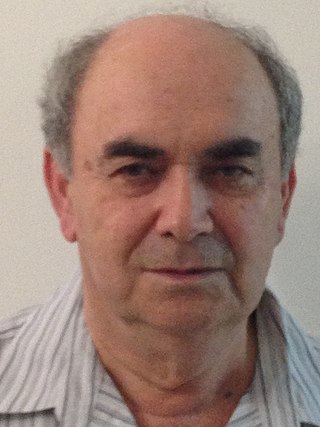
Baruch Fischer is an Israeli optical physicist and Professor Emeritus in the Andrew and Erna Viterbi Faculty of Electrical and Computer Engineering of the Technion, where he was the Max Knoll Chair in Electro-Optics and Electronics.














